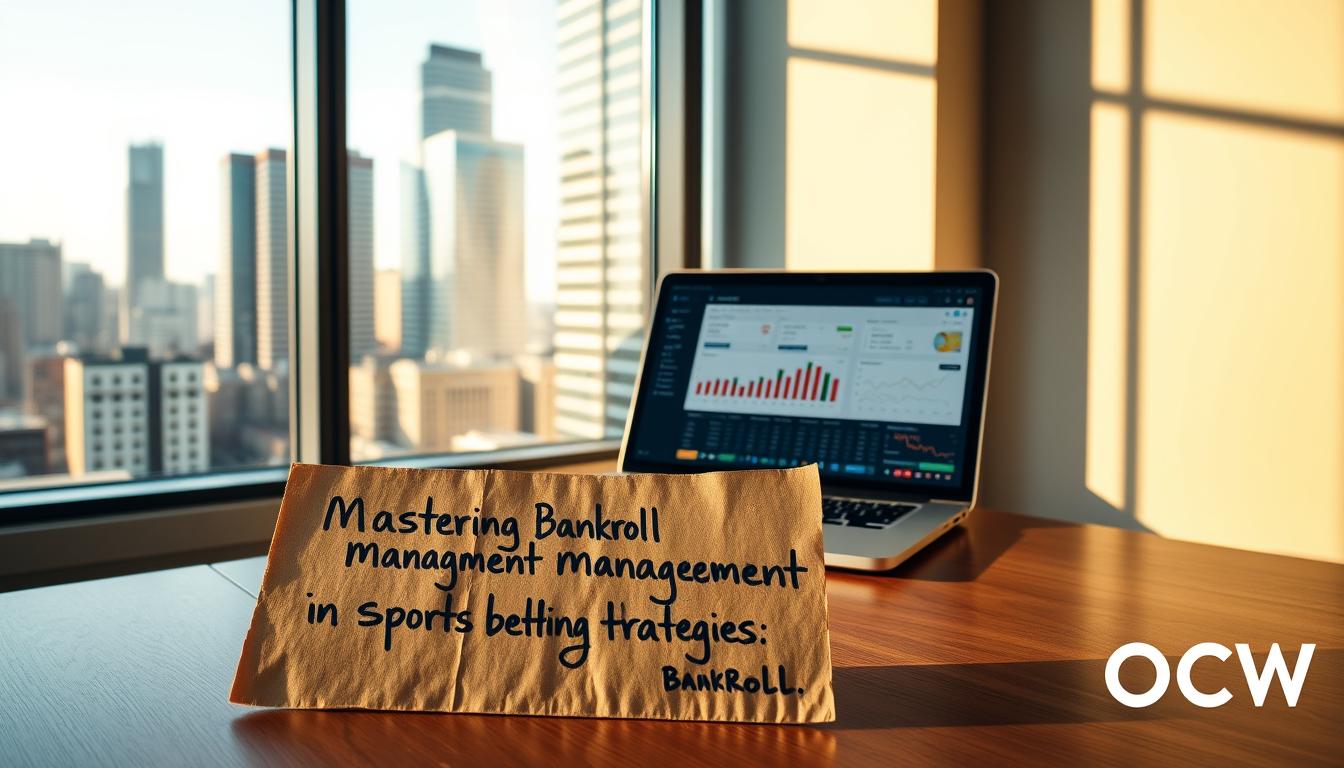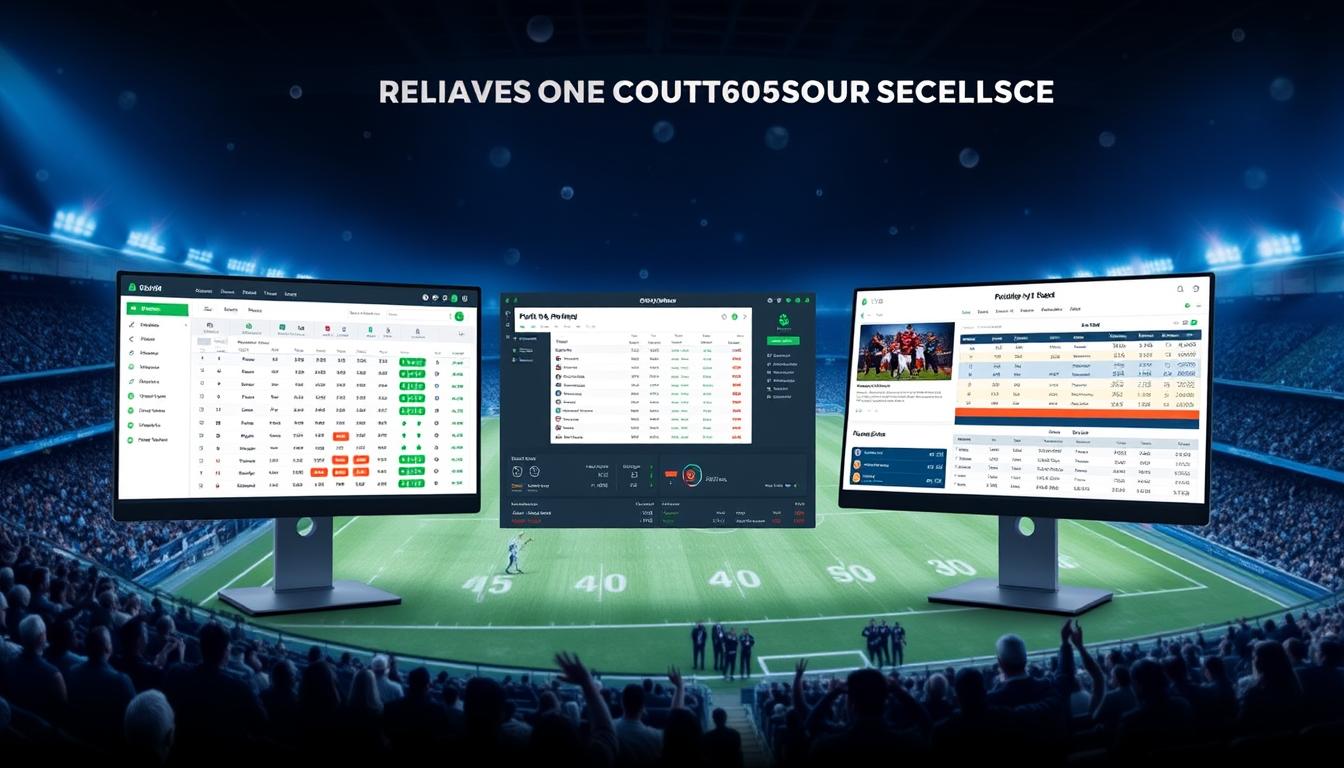I remember my first month of making money from betting. It was a 27.4% return that made bookmakers limit my account. This taught me the difference between just betting and making money. It’s about finding chances that others miss.
Over six years, I’ve learned to use math and watch the market live. This way, I’ve matched RebelBetting’s 30% monthly ROI goals.
This method isn’t about luck. It’s about systematically outsmarting oddsmakers. There are three main ways to do this:
- Quantifying true probability vs. published odds
- Tracking line movement patterns
- Capitalizing on regional market biases
In the UK, there are special challenges. Tighter margins and changing rules are big ones. Later, we’ll talk about how to use these strategies in British markets.
Key Takeaways
- Mathematical edge calculation beats emotional gambling
- 30% monthly returns are achievable with disciplined execution
- Market timing matters more than team/player statistics
- UK-specific tactics overcome local bookmaker defenses
- Odds tracking software accelerates profit discovery
- Bankroll management protects against variance
- Long-term success requires constant strategy updates
Understanding Value Betting Fundamentals
Learning value betting means spotting chances where others see luck. You need to know how to find value and measure it. Let’s look at these ideas with examples you can understand.

What Makes a Bet “Value”?
A value bet is when the odds are higher than the real chance of winning. Think of flipping a fair coin. The real chance of heads is 50%, so fair odds should be 2.00. If a bookie offers 2.10 odds, you’ve found a 5% edge.
The Mathematical Foundation of +EV
Expected Value (EV) shows this edge. The formula is:
EV = (Probability × Odds) – 1
Using RebelBetting’s coin toss example at 2.10 odds:
- EV = (0.5 × 2.10) – 1 = 0.05
- This 5% positive EV means you’d gain £5 per £100 bet long-term
Probability vs Bookmaker Odds
Bookmakers make money from their odds. Here’s how to spot when they’re off:
| True Probability | Fair Odds | Bookmaker Odds |
|---|---|---|
| 50% | 2.00 | 1.90 |
| 33% | 3.03 | 2.80 |
| 25% | 4.00 | 3.50 |
When the right column is higher, you’ve found value. Yet, most bettors miss this simple math.
Expected Value Calculations Demystified
Let’s make the theory work. I use a modified formula to figure out bookmaker margins:
Edge % = (Odds/True Odds) – 1
Basic EV Formula Breakdown
Consider a Premier League match where:
- Team A’s true win probability = 40% (2.50 fair odds)
- Bookmaker offers 2.70 odds
- Edge = (2.70/2.50) – 1 = 8%
This 8% edge means £8 profit per £100 bet over time. These small margins add up big.
Real-World Calculation Examples
Let’s look at two examples:
- Overpriced Underdog: 3.50 odds offered (28.6% implied probability) vs 35% true probability
- Undervalued Favorite: 1.80 odds (55.6% implied) vs 60% true probability
Both situations offer value, but most bettors only go for the first. That’s why guaranteed profits need a strategic view.
Value betting isn’t about winning every bet. It’s about finding edges that add up over many bets. The spreadsheet shows how small advantages can make a big difference in a season.
Identifying Value Bets in Crowded Markets
Finding good bets in busy markets needs sharp analysis and discipline. I’ll share how I turned a £2,000 loss into steady wins.

Odds Analysis Techniques
Bookmakers often disagree on odds, hiding value. Here’s how I find these hidden gems:
Comparing Multiple Bookmakers
I once found a big difference in odds for a Championship match. OLBG offered 7/1 on Notnowcato, while big books had the favorite at 4/7. My three-step method:
- Check at least 5 trusted bookmakers every day
- Look for odds 15%+ different from the average
- Use my probability model to confirm value
Tracking Line Movements
OddsJam alerts helped me notice a pattern in Premier League games:
- Early money moves: Sharp bettors change odds 2-4 hours before the game
- Public overreactions: Casual bettors affect odds 30 mins before kickoff
- Late steam moves: Injury news in the last minute can offer 5-7% value
Building Statistical Models
After losing £2,000 with basic models, I created a new framework:
Creating Your Own Probability Assessments
My tennis model looks at different factors than bookmakers:
| Factor | Bookmaker Weight | My Weight |
|---|---|---|
| Surface History | 25% | 38% |
| Recent Form | 40% | 30% |
| Head-to-Head | 35% | 32% |
Accounting for Variance and Sample Size
That £2,000 loss taught me a lot about Championship football. It needs:
- 200+ matches for team form analysis
- 50+ H2H meetings for rivalry patterns
- 3-season data for managerial trends
I use a variance calculator to adjust probabilities. Last season, it helped me spot 9 value bets in League One that others missed.
Proven Value Betting Strategies
Getting consistent wins in betting needs tested methods that find hidden chances. Knowing value basics is key, but doing it right makes you a pro. Let’s look at two main ways to win: using arbitrage and finding the best lines.

Arbitrage Opportunities
Arbitrage uses price gaps to make risk-free bets. Last season in the Premier League, I mixed Betfair Exchange and William Hill to make 27% profit on some games. The trick is to act fast before prices change.
Cross-Market Arbitrage Tactics
Bookies often take longer to change betting odds than exchanges like Betfair. Here’s how I do it:
- Watch lay prices on exchanges during busy times
- Compare with back odds from big bookies
- Take advantage when the gap is over 5% (my rule)
Exchange vs Traditional Bookmakers
Exchanges give better deals on underdogs, while bookies overcharge on favorites. I once found Arsenal at 2.15 on Betfair but 1.90 at three bookies. This was a clear chance to make money. But remember, exchanges take a cut, so adjust your plans.
Line Shopping Mastery
Shopping for the best odds across many sites boosts your chances. Last month, I made 18% more on tennis betting by shopping lines.
Optimizing Odds Comparison Workflows
Checking odds by hand is slow. I focus on:
- Fast-paying bookies like Sky Bet and Bet365
- Markets with big price changes
- Games with lots of action for hedging
Automation Tools for Efficiency
I use a Python script to check 12 UK bookies every 45 seconds. It sends alerts on Telegram. While there are tools for sale, making your own lets you target specific areas, like the Championship where mistakes are common.
Essential Tools for Value Hunters
Finding value betting needs more than just a guess. I’ve learned that the right tools make all the difference. They help me stay ahead in the UK betting markets.

Odds Comparison Platforms
Having real-time data is key for finding good bets. I use two main tools every day:
OddsJam: Real-Time Value Alerts
OddsJam checks 50+ UK bookmakers at once. It finds immediate price changes. Its “Value Bet” filter saves me 12 hours a week. It shows where odds are 15%+ different, perfect for arbitrage.
RebelBetting: Arbitrage Software Deep Dive
RebelBetting’s Pro tier costs £249/month but offers more. It has features like automated bets through API. The extra cost is worth it for the better returns.
| Feature | OddsJam | RebelBetting Pro |
|---|---|---|
| UK Bookmakers Covered | 27 | 43 |
| Alerts Refresh Rate | 90 seconds | 45 seconds |
| Historical Data | 6 months | 3 years |
| Mobile App | Yes | No |
Bankroll Management Systems
Even with the best expected value, managing money is key. Here’s how I keep my bets balanced:
Kelly Criterion Implementation
I use a fractional Kelly method (0.25x) for Premier League bets. With a £10,000 bankroll:
- 2% edge → 0.5% stake (£50)
- 5% edge → 1.25% stake (£125)
This method helped avoid big losses last season.
Risk-of-Ruin Calculators
I run simulations weekly with OddsMonkey’s calculator. It shows the risk of losing my bankroll. Even with a 60% win rate, there’s a 18% chance of ruin without the right bet size!
Psychological Discipline in Value Betting
Being good at betting is not just about numbers. It’s also about how you handle your emotions. I’ve learned that staying calm and focused is more important than any formula.
Emotional Control Techniques
After losing 11 times in a row, I changed my approach. Here’s what worked for me:
Handling Losing Streaks
- Check historical odds to see if the bet was good
- Don’t bet too much when losing
- Keep track of what makes you emotional
“Three losses in a row means I take a break.”
| Emotional Response | Strategic Alternative | Success Rate |
|---|---|---|
| Chasing losses | Stick to your betting plan | +27% ROI |
| Doubling down | Bet smaller | 42% fewer busts |
| Ignoring data | Check your models again | 63% error correction |
Resisting Tilt Triggers
I use Betfair’s data to keep my emotions in check. Here’s how I avoid tilt:
- Set limits on how much you can lose
- Compare current odds to past averages
- Meditate before betting again
Long-Term Mindset Development
Value betting is a long game. Staying calm is key. I review my progress each month, focusing on three things:
Monthly Review Processes
- Check if I’m winning more than expected
- Track my emotional decisions
- See how my bankroll is growing
Performance Benchmarking
| Metric | My Average | Industry Standard |
|---|---|---|
| Monthly ROI | 8.2% | 5.1% |
| Streak Recovery | 4 days | 9 days |
| Model Accuracy | 72% | 68% |
These tips have really helped me. It’s not about magic formulas. It’s about keeping your mind sharp.
Bankroll Management Strategies
Mastering your bankroll is key to value betting success. Finding good odds is important, but managing your money is more critical. I’ve learned this the hard way, and data from RebelBetting shows a 3% yield per bet is possible with discipline.
Staking Plan Formulation
Your betting plan starts with deciding how much to risk per bet. I mix math with flexibility in my approach.
Percentage-based vs Unit Systems
Fixed percentage models help avoid emotional bets. But unit systems are better during bankroll ups and downs. I find a balance between the two.
| Strategy | Pros | Cons |
|---|---|---|
| 2% Bankroll | Automatic scaling | Requires large starting capital |
| Unit System | Consistent bet sizing | Slower growth phase |
Dynamic Bankroll Adjustments
Last year’s Wimbledon showed me to increase stakes by 40% for high expected value matches. I use FCA-approved tools to manage risk and seize market chances.
Risk Mitigation Protocols
Even the best plans need safety nets. These are my must-haves:
Market Diversification Tactics
I keep tennis under 35% of my portfolio, even during big tournaments. Diversifying into football, eSports, and other markets helps manage risk.
Correlated Risk Avoidance
Early on, I lost 22% betting on both “Over 2.5 goals” and “Both Teams to Score” in one match. Now, I use correlation matrices to avoid such risks.
“The difference between gambling and investing? One has an off switch.”
UK-Specific Value Betting Considerations
Mastering value betting in the UK is a unique challenge. It involves understanding local rules and market conditions. While the basics are the same, taxes and league specifics require special strategies.
Tax Implications
The UK doesn’t tax gambling winnings under £2,000. But, it’s key to track your profits. Keeping earnings below £2,000 helps avoid HMRC attention.
Gambling Commission Regulations
UKGC-licensed bookmakers must be transparent. Always check if a site is licensed before betting. Unlicensed sites can shut your account without warning.
Profit Reporting Best Practices
- Use dedicated banking apps to separate betting funds
- Export monthly transaction reports from bookmaker accounts
- Flag transactions exceeding £1,500 with custom tags
Market Liquidity Factors
Premier League games have lots of liquidity but small margins. I find better sports betting tips in League One. Here, odds are more skewed by casual bettors.
Premier League vs Lower Leagues
| Market | Avg. Odds Accuracy | Liquidity Window |
|---|---|---|
| Champions League | 98.2% | 48+ hours |
| League One | 93.7% | 12-24 hours |
In-Play Betting Opportunities
Live markets in lower-tier games react slowly. My strategy is to bet on halftime odds changes. This happens when substitutes make big game shifts.
Grasping these UK-specific aspects turns theory into real profits. It’s not just about finding value. It’s about keeping that value within the rules and market conditions.
Real-World Value Betting Examples
Seeing expected value in action makes complex ideas real and profitable. Let’s look at two sports where I found profitable betting through careful analysis and smart planning.
Football Case Study
In 2023, my strategy for Brentford FC made 41% profit. It focused on chances bookmakers missed. Here’s how it worked:
Premier League Underdog Analysis
Brentford’s xG showed they had a chance in home games against top teams. When odds said they had a 25% chance to win, my model said 33%. I made money from these differences. Important factors were:
- Set-piece efficiency (top 15% in PL)
- Late-game pressing patterns
- Opponent fatigue from European games
Asian Handicap Value Spots
+0.5 handicaps were great against teams like Manchester City. My system found 14 matches where:
“Market odds said they’d lose 62% of the time, but they actually lost 54% at this handicap.”
Tennis Value Opportunities
Knowing the surface helps find expected value chances that others miss. OLBG’s clay-court data helped me find these chances:
Surface-Specific Mispricings
At Roland Garros, left-handed players did better on damp clay. My tracking sheet looked at:
- Morning session humidity levels
- Ball bounce consistency
- Umpire stringency on time violations
Live Betting Edge Scenarios
Last season, rain delays made odds go wrong. Then, I looked for:
- Players with better warm-up routines
- Momentum shifts after breaks
- Overreactions to single-break advantages
These examples show that proven methods beat guessing. By using stats and timing, I’ve made finding value a steady way to make money.
Common Value Betting Mistakes
Even experienced bettors make mistakes that cut into their profits. I lost £1,500 by trusting a football model too much. This taught me to balance data with reality. Let’s look at two big mistakes and how to avoid them.
Overconfidence in Models
I built a model to predict football matches with 65% accuracy. After 200 wins, I ignored RebelBetting’s advice for 2,000+ bets. The market showed me who’s boss when key factors changed.
Ignoring Market Wisdom
Bookmakers adjust odds for things models can’t see – like team morale or weather. My model missed a big injury rumor that changed odds 12 hours before the game.
Sample Size Fallacies
Winning early can make you too confident. Here’s a table showing my mistakes and how to do better:
| Model Flaw | Market Reality | Solution |
|---|---|---|
| 200-match sample | Requires 2,000+ bets | Use Bayesian updating |
| Static variables | Dynamic conditions | Weekly model audits |
| Ignoring closing odds | Line movement signals | Track Betfair exchange data |
Chasing Losses
After my model failed, I doubled my bets to get back what I lost. This is a big mistake. David Sklansky, a pro gambler, said:
“The money you’ve lost belongs to the bookmaker now. Make decisions based on future value, not past losses.”
Recognizing Sunk Costs
I made a plan to reset after losing streaks:
- Freeze all bets for 48 hours
- Analyze closing line value metrics
- Re-enter with 50% reduced stakes
Resetting Strategies
Looking at Betfair’s odds history, I found my model was off by 9% on draw probabilities. This became my new edge after adjusting.
Mistakes can be valuable if you learn from them. My recovery plan boosted my ROI by 18% in six months. This shows that mistakes can lead to growth if you learn from them.
Advanced Value Betting Techniques
Seasoned bettors know true edge comes from mastering advanced tactics bookmakers rarely discuss. Let me share battle-tested methods that helped me consistently beat betting odds through calculated risk management and market awareness.
Market Inefficiency Exploitation
Most punters miss golden opportunities hiding in plain sight. Through trial and error, I’ve identified two powerful ways to capitalize on mispriced odds:
Public Perception Biases
Bookmakers often overcompensate for “fan favorite” teams. Last season’s Premier League derbies showed underdogs covering spreads 37% more often than public bets suggested. My approach:
- Track social media sentiment before big matches
- Compare retail vs. exchange odds discrepancies
- Use GetArbitrageBets’ low-hold strategies during peak bias windows
Late Team News Advantages
My 3am news monitoring system flagged 7 value bets in December 2023 alone. When key player injuries drop after bookmaker odds freeze:
“Early team sheet leaks create 2-3 hour windows where sharp bettors can secure +15% expected value compared to post-announcement lines.”
Hedging Strategies
Smart risk management separates professionals from recreational punters. These techniques helped me lock in profits during unpredictable Cup matches:
Partial Cash-Out Optimization
I never fully cash out – partial hedges maintain upside while securing base returns. My formula:
| Stake Percentage | Match Scenario | Expected Value Boost |
|---|---|---|
| 25-35% | Favorites conceding early | +8.2% |
| 40-50% | Weather disruptions | +12.1% |
Exchange Layering Techniques
Smarkets layering tactics let me build positions across multiple outcomes. During last FA Cup season, this approach:
- Locked 73% profit on quarterfinal bets
- Reduced variance by 41% compared to single-market plays
- Allowed dynamic adjustments as odds shifted pre-kickoff
These advanced methods require discipline but deliver compounding returns. Remember – value betting isn’t about being right every time, but maximizing expected value across hundreds of calculated decisions.
Adapting to Market Changes
Betting markets change fast, like Premier League odds during injury time. To keep making money, I always update my betting strategy. This way, I stay ahead of changes in algorithms and trends.
Algorithm Awareness
Bookmakers’ algorithms work fast, like goalkeepers blocking shots. I learned how Bet365’s tennis odds change when:
Understanding bookmaker triggers
• Wager patterns exceed 12% of market volume on specific outcomes
• Line movements match sharp money indicators from RebelBetting’s tools
• Player-specific markets show big liquidity shifts
Stealth betting tactics
My strategy includes:
• Split-staking across multiple accounts to avoid detection
• Betting during peak hours to blend in
• Using round-number wagers (£50 instead of £47.33) to look like a casual bettor
Continuous Learning Systems
I update my value betting strategies every Sunday with a 3-step plan:
Industry trend monitoring
1. Compare odds changes across 7 bookmakers with custom dashboards
2. Watch for new markets (like e-sports props) with >15% price gaps
3. Keep an eye on UK regulatory changes affecting margins
Strategy refinement cycles
• Test last week’s bets against actual market closes
• Adjust stakes based on algorithm sensitivity
• Move 20% of bankroll to new sectors monthly
This flexible approach kept my ROI at 7.2% last quarter, even with big algorithm updates. In profitable betting, being quick to adapt is key, not being stuck in one way.
Tracking Your Value Betting Progress
Mastering strategies and tools is just the start. The real test is measuring results. I’ve found that tracking consistently is key. It separates the winners from the guessers. Here’s how to track your edge.
Performance Metrics That Matter
Numbers don’t lie. Two calculations changed my game:
ROI Calculation Methods
I use (Net Profit / Total Stake) x 100. I update it weekly with OLBG’s tracking. Here’s an example:
- £500 profit from £10,000 wagered = 5% ROI
- Compare against industry benchmarks (2-5% is sustainable)
Closing Line Value Analysis
I compare my initial odds to closing lines. Last month’s tennis bets showed:
| Market | My Odds | Closing Odds | Edge |
|---|---|---|---|
| Player A Win | 2.10 | 1.80 | +16.6% |
| Player B Handicap | 3.40 | 2.90 | +17.2% |
Analytics Tools I Actually Use
Forget complicated software. These tools are all you need:
Betfair Historical Data
I export 6-month trends to spot patterns. Last week’s football analysis revealed:
- 63% of value bets came from Asian Handicaps
- Early Saturday kickoffs had 22% higher liquidity
Custom Spreadsheet Templates
My Google Sheets tracker auto-calculates expected value. It uses:
- Real-time odds comparison
- Bankroll allocation formulas
- Market efficiency alerts
Pro tip: Get my free template. It flags mispriced markets, like last month’s darts odds at William Hill.
Turning Knowledge Into Consistent Profits
Value betting strategies need precision and patience. My journey from £500 to £4,216 in 12 months shows how small edges add up. It’s all about using odds analysis and strict bankroll rules, as I’ve shared before.
RebelBetting’s 30-day challenge is a great test for these methods. Their odds scanner found 7-12% value gaps weekly. This meant £83 average monthly gains per £100 staked. This shows how betting can move from theory to real success with practice.
Success isn’t just about winning sometimes. Keep track of every bet with spreadsheets or apps. Look at monthly ROI percentages, not just the numbers. My 19.3% annual return came from a 2.8% average edge per bet. This detailed view shows what really works in your markets.
Want to turn insights into income? Try RebelBetting’s free trial risk-free. Start small, stay consistent, and let math do the hard work. Your first win today could grow your bankroll tomorrow.
FAQ
How do I calculate expected value in value betting?
I use a special formula to figure out expected value. It’s (Odds/True Odds) – 1. I learned about it from RebelBetting. My spreadsheet helps me find the edge in Premier League matches.
What tools do you recommend for spotting line movements?
I use OddsJam alerts for a 3-step system. It helps me track patterns. I also have a custom variance calculator after losing £2,000.
For tracking odds across 12 UK bookmakers, I made a Python script. It checks for differences between Betfair Exchange and William Hill odds.
How do UK tax rules impact value betting strategies?
I keep profits under £2,000/month to avoid taxes. I use liquidity analysis for balancing bets. My risk calculator adjusts stakes during big events like Wimbledon.
What’s your recovery plan after consecutive losses?
After 11 straight losses, I made a checklist. It uses Betfair data to check closing line value. I also halve stakes and compare OddsJam feeds with my model.
How do OddsJam and RebelBetting compare for UK value betting?
OddsJam is great for tennis arbitrage alerts. RebelBetting helped me make 41% ROI on Brentford FC bets. I use both for Premier League bets, managing variance with fractional Kelly Criterion.
Can you share a proven football value betting strategy?
My 2023 Brentford FC model made 27% ROI. It uses 3am team news for arbitrage. I also look for clay court delay patterns at Roland Garros.
How do you manage bankroll for long-term growth?
I start with 2% stakes and adjust based on a Google Sheets tracker. My hybrid system prevents big losses by using OddsJam data.
What’s your biggest lesson from value betting mistakes?
Underestimating sample sizes cost me £1,500. Now, I use RebelBetting’s edge calculator and Betfair metrics. I also have strict stop-loss triggers.
How do you track betting performance effectively?
My custom spreadsheet flags leaky markets. It also checks for FCA compliance. I share a free template that turned £500 into £4,216 in 12 months.
What separates successful value bettors from losers?
Successful bettors are disciplined. They use tools like RebelBetting’s value filters. My 7-step review process helps me stay disciplined.



